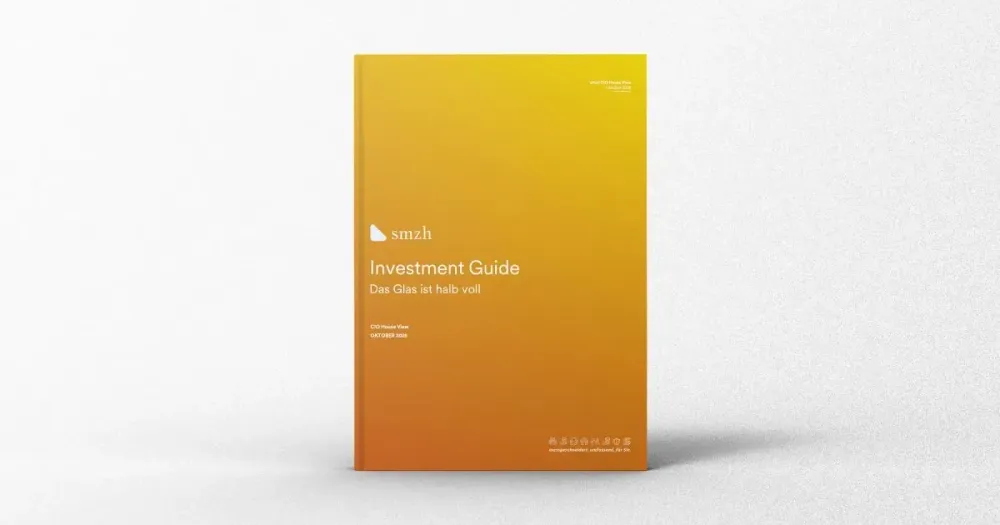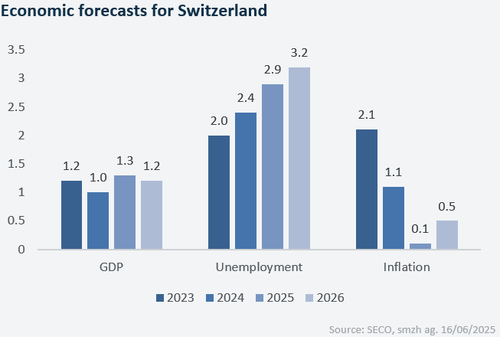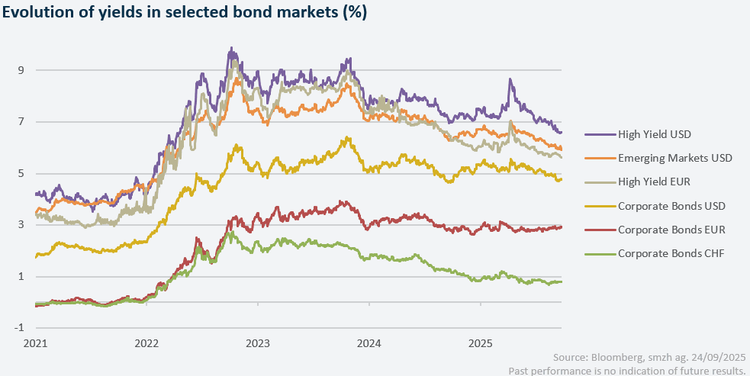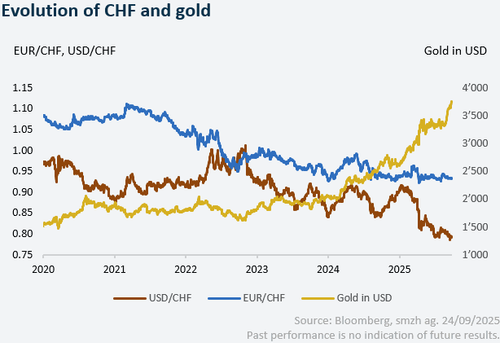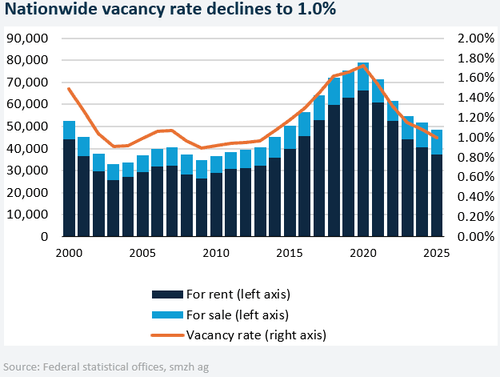Glass half full
Financial markets are, at their core, a mirror of human sentiment, constantly shifting between fear and enthusiasm, caution and conviction. When we look at a glass containing equal parts of air and water, do we see what’s missing or do we focus on what there is? This age-old question, glass half empty or half full, has its relevance also in today’s financial markets. With headlines oscillating between warning signs and optimism, investors are confronted daily with reasons both to worry and to hope.
At first glance, the backdrop is ambiguous: the economic cycle is far advanced, the US labor market is weakening, and the Federal Reserve faces a delicate balancing act. On the one hand, it must persist in its fight against stubborn inflation; on the other, it is tasked with facilitating full employment and economic growth. Navigating these competing objectives, the Fed’s policy decisions remain finely poised, adding to market uncertainty and debate about what comes next.
For many, their instinct is to focus on the dangers, the empty half of the glass, especially given today’s elevated equity and bond market valuations. With so much optimism and good news already priced in, it can be tempting to assume that the best days are behind us and that the risks of disappointment are mounting.
But if we tilt the glass or rather our perspective, positive forces may still be at work beneath the surface-level caution: resilient corporate earnings, technological innovation, and a historical precedent that rate cuts, outside of recessions, often revive rather than exhaust market opportunities. At the same time, history shows that the early stages of monetary easing are often accompanied by heightened equity market volatility. Investors typically remain cautious until there is greater confidence that recession risks have been averted and that the transition to lower interest rates will effectively support financial stability and sustainable economic growth, as low confidence during downturns can dampen the stimulative impact of rate cuts on borrowing and investment.
Ultimately, the ever-present uncertainties and mixed signals in financial markets remind us that a balanced perspective is essential. While risks should not be ignored, focusing solely on potential downsides may obscure genuine opportunities on the horizon. In this environment, maintaining a disciplined investment approach rather than seeking to time short-term swings remains the most prudent strategy. History shows that those who stay invested and stay focused on long-term goals are best positioned to benefit as the glass gradually fills up again.
Enjoy the read.
Best regards,
Gzim Hasani, CEO
Bekim Laski, CFA, Chief Investment Officer
